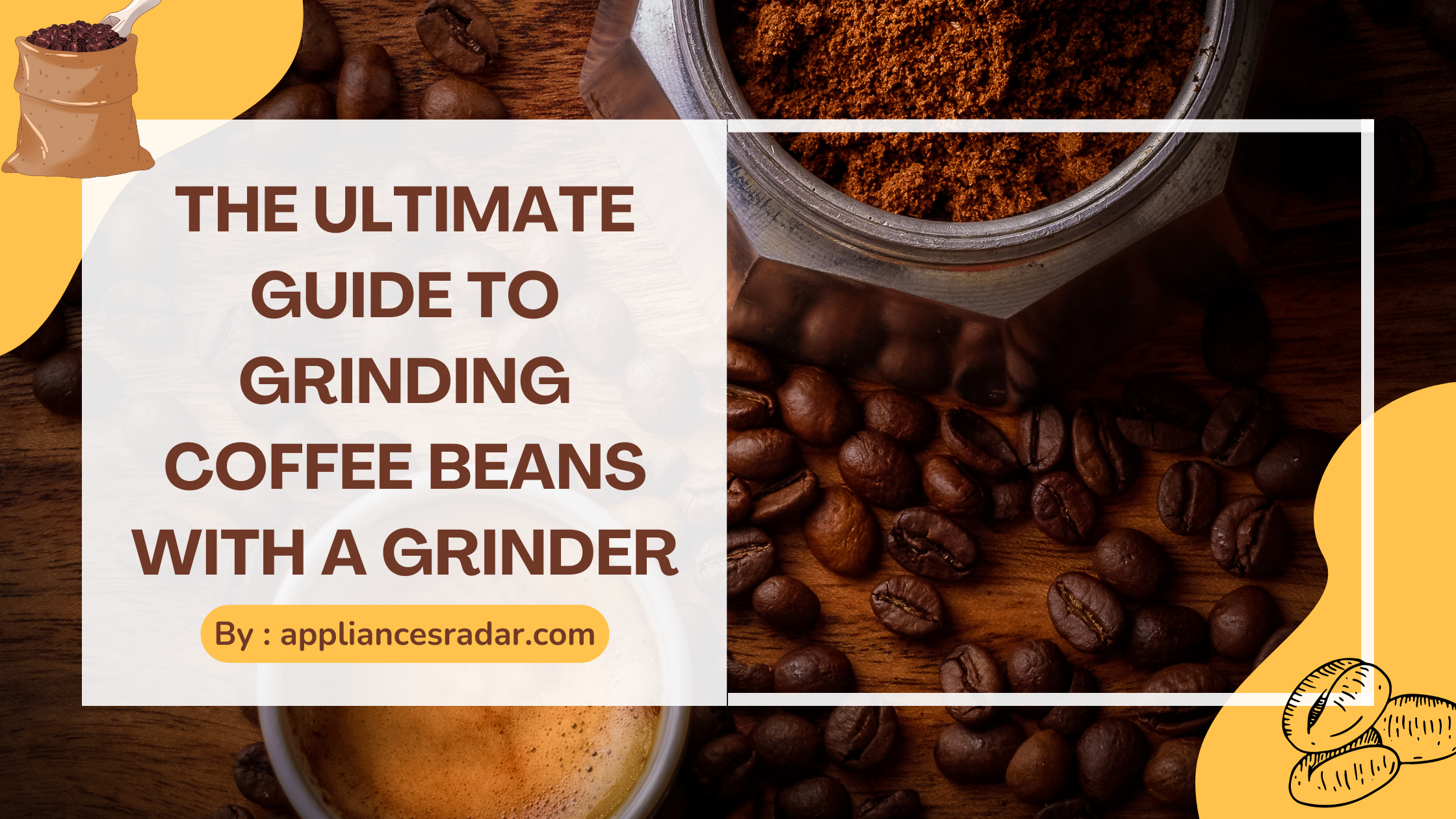
If you're a coffee lover, then you know that the key to a great cup of coffee is using fresh ground coffee beans. There are many ways to grind coffee beans, but not all methods are created equal.
In this blog post, we will teach you the best way to grind your coffee beans with a grinder. We'll also discuss the benefits of grinding your own beans, and provide tips for choosing the right grinder for your needs.
Definition of Grinding Coffee Beans
Grinding coffee beans refers to the process of reducing the beans into smaller particles before brewing. The resulting texture or size will have an effect on the taste and flavor of the final beverage. Generally, for every type of brewing method, a different amount of grinding is necessary in order to extract optimal amounts of soluble compounds from the coffee grounds.
As such, it is important to determine your desired brewing style and find an appropriate grinder that can provide a consistent grind without over-extracting compounds from the beans. If done properly, grinding your own coffee beans can be a rewarding experience that produces rich and bold-tasting cups of coffee with each brew.
Benefits of Grinding Your Own Beans
For coffee lovers, the task of grinding beans can be a game-changer. Not only does it provide a fresher cup of java, but it also has a variety of other advantages. Grinding your own beans enhances the flavor and aroma of your coffee as it maximizes flavor and freshness.
Moreover, cheaper coffee beans tend to offer greater value than pre-ground options because you can grind as much or as little as you need per cup. Additionally, grinding your own beans allows you to customize your grind size based on the type of preparation; this allows you to create more interesting recipes with diverse flavors.
Choosing the Right Grinder
A. Types of Grinders to Consider
1. Blade Grinders:
Blade grinders are the most affordable means of grinding your coffee beans. They consist of a container with a blade in the center that chops up the beans.
While they can be efficient, they tend to produce uneven grounds and can heat up the beans, resulting in flavor loss.
2. Burr Grinders:
Burr grinders are the preferred option for grinding coffee beans. They consist of two revolving abrasive surfaces that grind the beans to a consistent size and texture.
Burr grinders produce a much more even grind than blade grinders, and they don’t heat up the beans or strip away flavor.
3. Electric Grinders:
Electric grinders are the most powerful and efficient way to grind your coffee beans. They use a motor to power the grinding process and can grind large amounts of coffee in less time than manual or blade grinders.
They also produce an extremely uniform, consistent grind that is perfect for French press or espresso brewing methods.
B. Factors to Consider When Shopping for a Grinder
1. Price:
Price is an important factor to consider when shopping for a grinder. Grinders can range from relatively inexpensive blade grinders to more expensive burr and electric grinders.
It’s important to consider your budget and decide which type of grinder will best meet your needs without breaking the bank.
2. Capacity:
Another important factor to consider is the capacity of the grinder. If you plan on grinding larger amounts of beans at a time, then it’s important to select a grinder that has enough capacity to handle your needs.
3. Grind Settings:
Different grinders come with different levels of adjustment for different grind settings. If you plan on grinding for different brewing methods, look for a grinder that offers the most precise control over grind size and texture.
C. Tips for Buying a Quality Grinder:
1. Read Reviews:
The best way to get a good sense of the quality and performance of any grinder is to read reviews from people who have used it. This will give you an idea of how well the grinder performs under different conditions and which features are most useful.
2. Check Warranties:
Make sure to check the warranty of any grinder you are considering. A good warranty will provide peace of mind if the grinder fails or doesn’t perform as expected.
3. Consider Cost:
Finally, consider the cost of the grinder when making your decision. Higher-end grinders may have more features and better performance, but they may also come with a higher price tag.
Best Practices for Grinding Coffee Beans
A. Preparing Your Beans:
Before you begin grinding, make sure that your beans are fresh and free of any moisture or clumps. This will ensure that the grinder operates properly and produces a uniform grind.
B. Setting Your Grind Size:
If your grinder has adjustable settings, it’s important to experiment with different grind sizes in order to find the one that best suits your brewing method. A coarser grind is better for French press and cold brew, while a finer grind is ideal for espresso and Turkish coffee.
C. Cleaning Your Grinder:
It’s also important to clean your grinder regularly in order to prevent the buildup of grounds which can affect the taste of your coffee. Check the manufacturer’s instructions for the best practices for cleaning your grinder.
D. Storing Your Grounds:
Once you have ground your beans, it’s important to store them in an airtight container away from light and moisture. This will ensure that they stay fresh and flavorful for as long as possible.
Conclusion
In conclusion, grinding your own coffee beans is an important step in achieving a great cup of coffee. It’s important to consider the various types of grinders, factors to consider when shopping for a grinder, and best practices for grinding before making your purchase. With the right grinder, you can take control of your coffee experience and brew the perfect cup every time.












